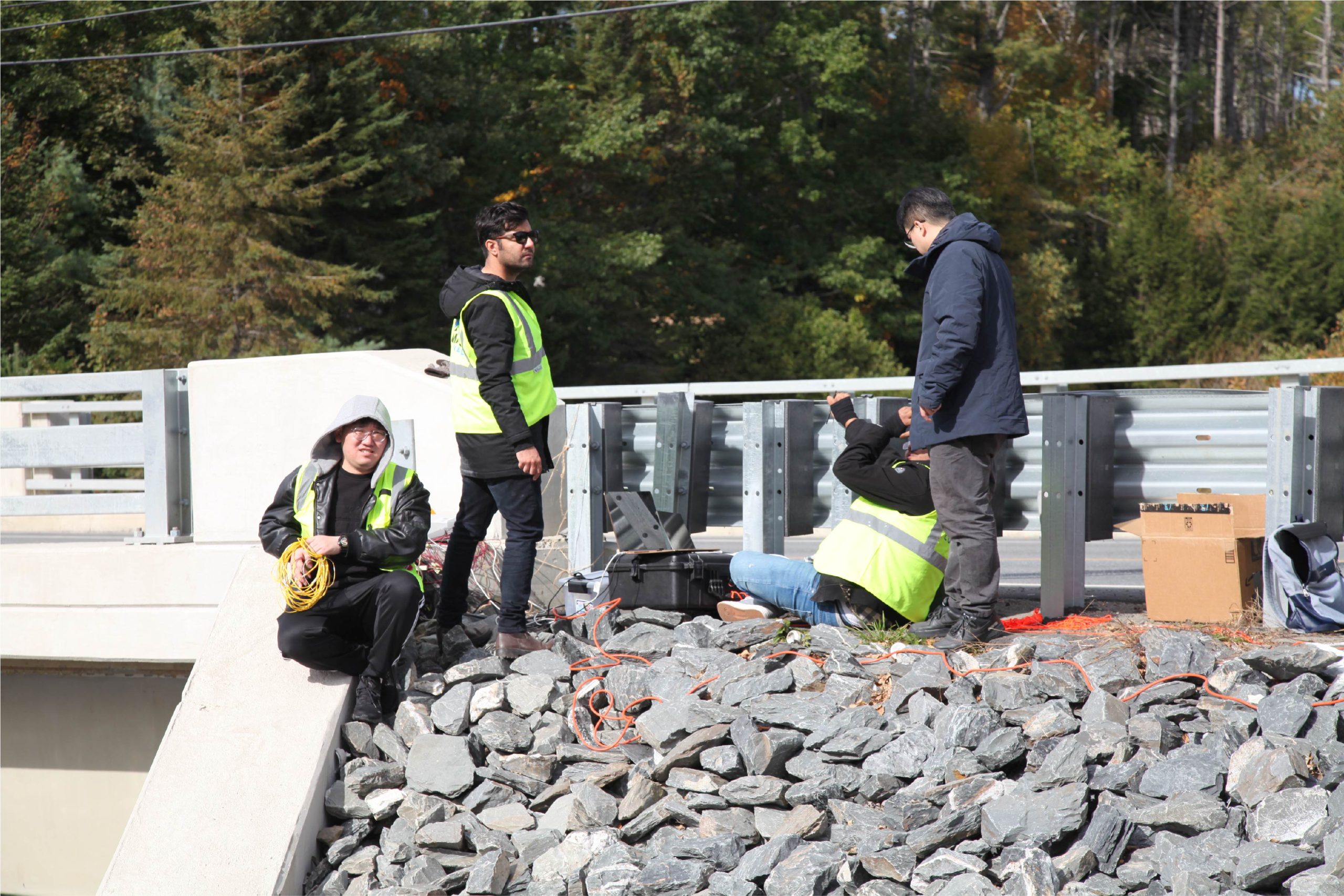
Project 1.05: Distributed Fiber Optic Sensing System for Bridge
Distributed Fiber Optic Sensing System for Bridge
Monitoringracking in Highway Bridges
Project 1.5
Project Summary
The deterioration of infrastructure presents a major challenge for the economy of any country. Additionally, the risk factor of possible loss of life has made Structural Health Monitoring (SHM) an important approach to evaluate the status of any civil infrastructure. Among different methods, Fiber Optics Sensors have shown great potential to complement current monitoring techniques. Its ability to survive harsh environments, immunity to electromagnetic interference, and its capability to provide thousands of data points from a single fiber has made this system very attractive. For this reason, this project aims to continue researching the use of Distributed Fiber Optics Sensors as a mechanism to constantly monitor bridges. Interrogation methods such as Optical Frequency Domain Reflectometry (OFDR), Brillouin Optical Time Domain Amplification (BOTDA), and Brillouin Optical Time Domain Reflectometry (BOTDR) are explored. Also, the development of smart textiles where fiber is embedded in the fabric will continue to be studied. New patterns based on the structure requirement will be developed and tested. Finally, data will be obtained from real bridges located in New Hampshire and Maine. The information collected will be used to validate the proposed approaches by comparing the results with other sensing systems such as strain gauges.
Project 1.05 Final Report
Principal Investigator:
Dr. Xingwei Wang
Co-PIs
Dr. TzuYang Yu
Institution:
University of Massachusetts Lowell
Project:
Complete
Start Date:
01/01/2019
End Date:
12/31/2023
Project Cost:
$620,000
Project Type:
Base-funded
Agency ID:
69A3551847101
Sponsors:
Office of the Assistant Secretary for Research and Technology, University Transportation Centers Program, Department of Transportation
UMass Lowell
Implementation of Research Outcomes:
The developed sensing textile was installed on Salmon River Bridge in NH and has been under monitored since winter 2019. The students were trained in signal processing skills. Now the ECE students are working together with Civil Engineering students to understand how to interpret the data in bridge health conditions.
Impacts and Benefits of Implementation:
The long-term monitoring data of the sensing textile on this railway bridge has demonstrated that the novel sensing system is robust for more than two years and can provide stable signals. With improved packaging, the fiber cables can be more robust. It could provide more information to estimate the safety of the bridges. In addition, it increased the body of knowledge or sensing textile. The students were trained in how to conduct field tests and solved unexpected problems on site
